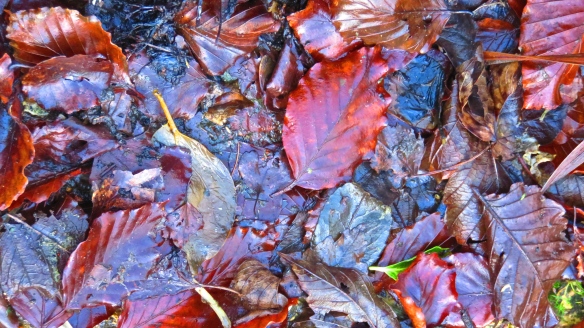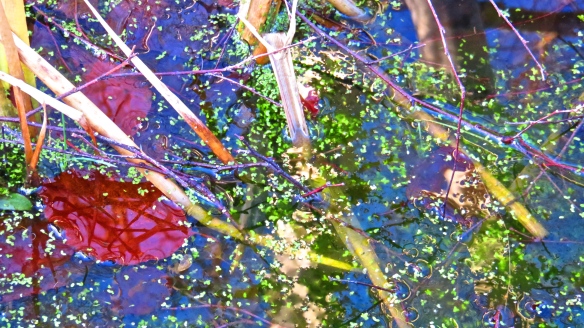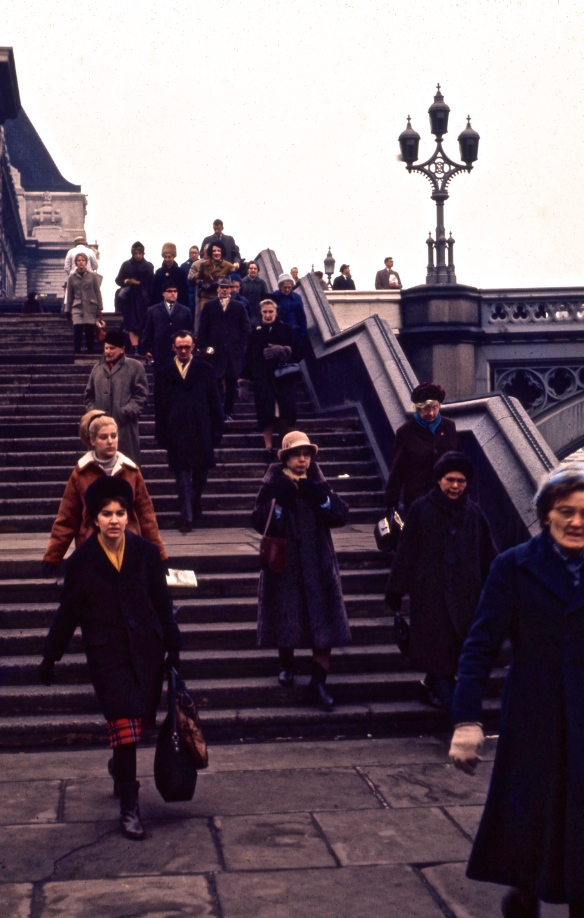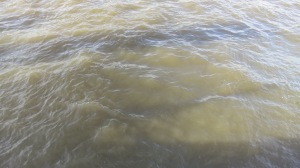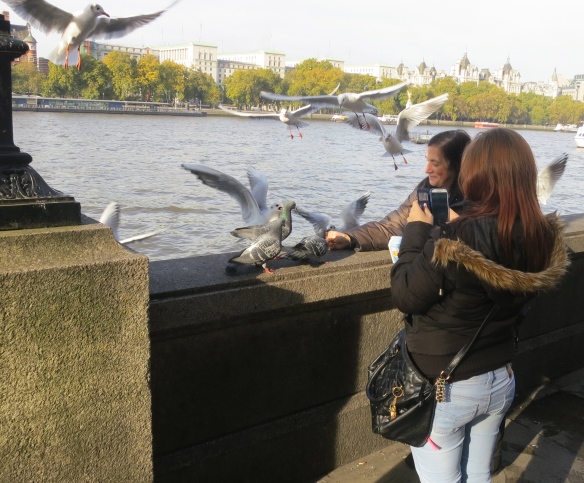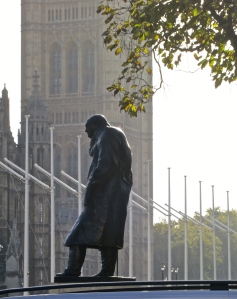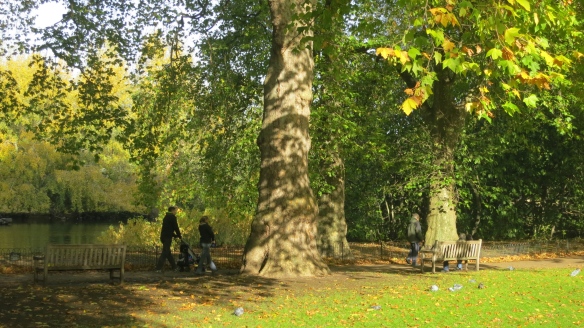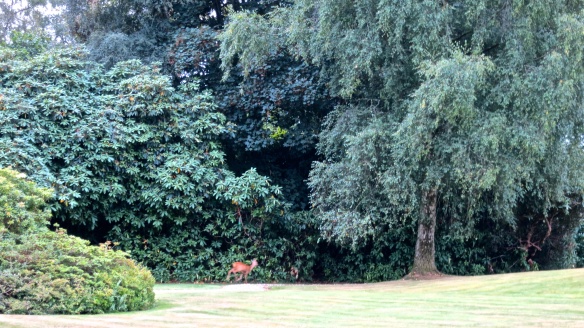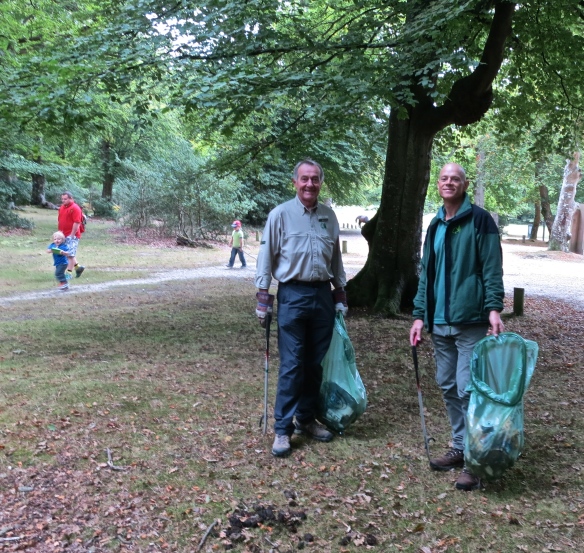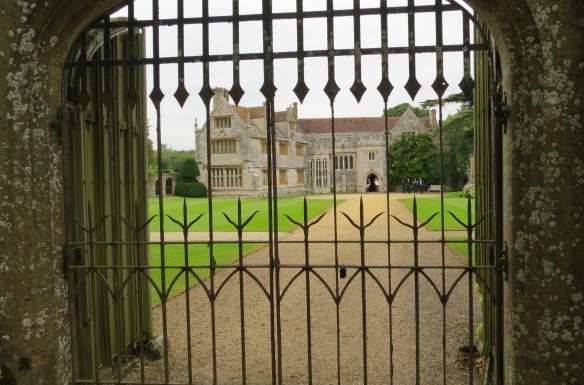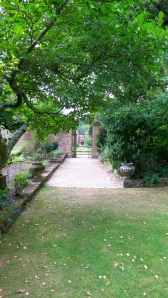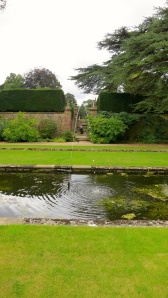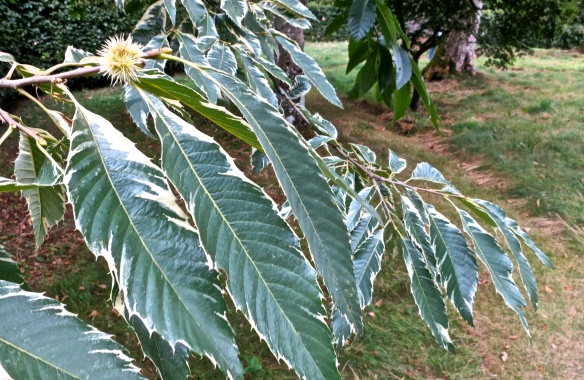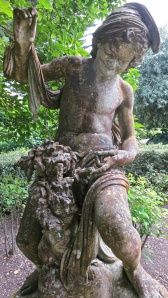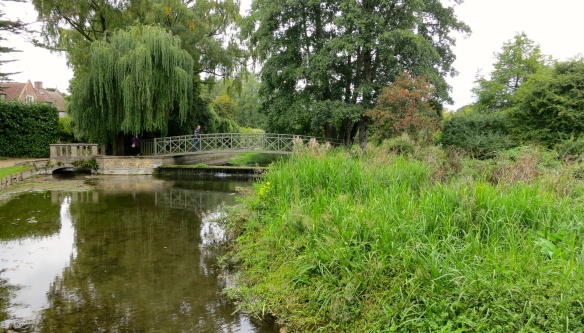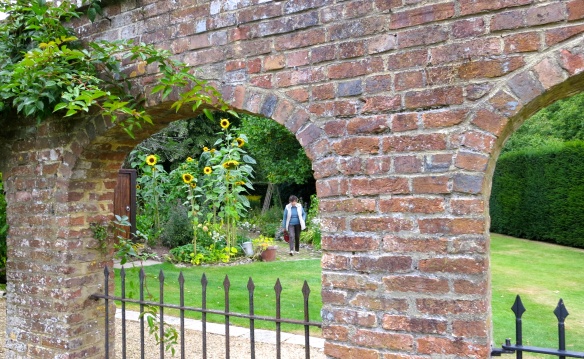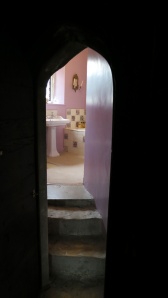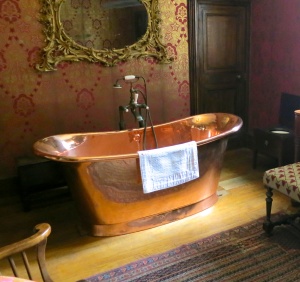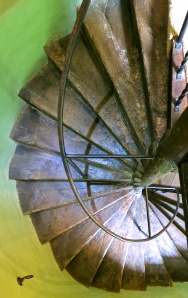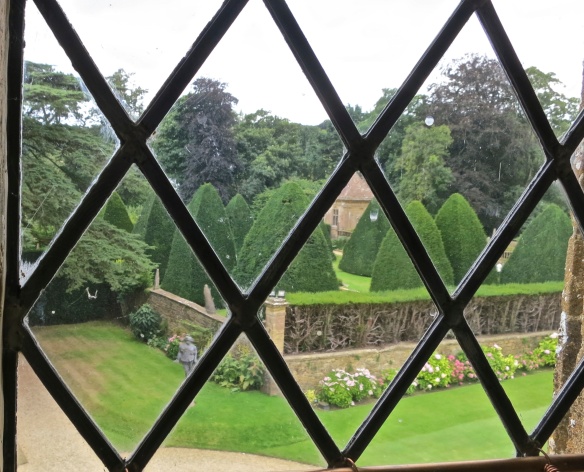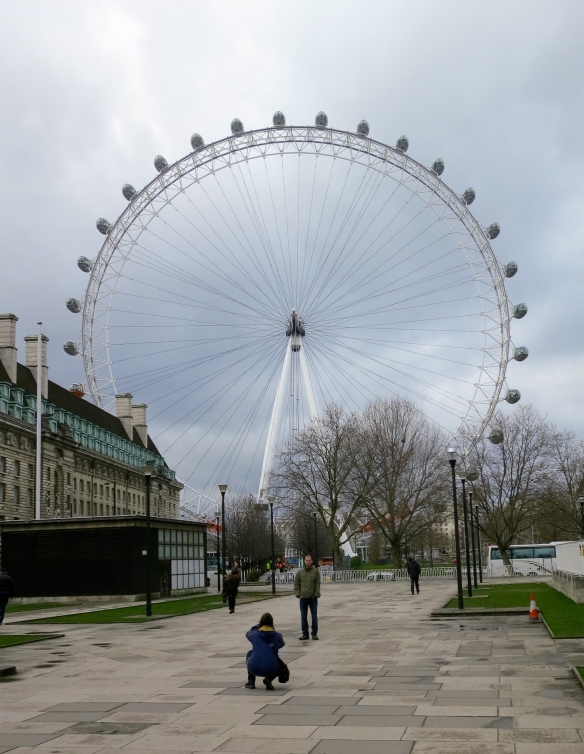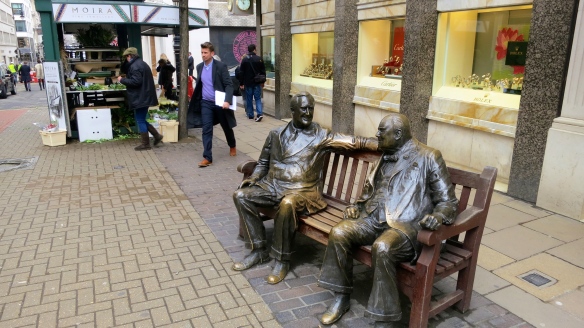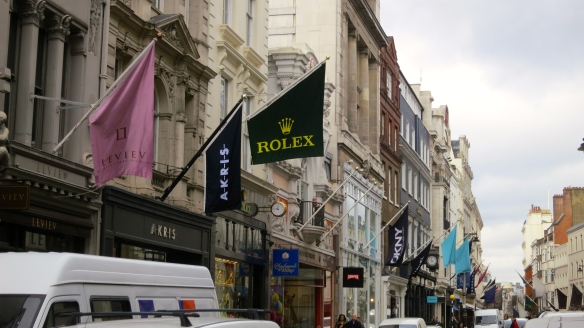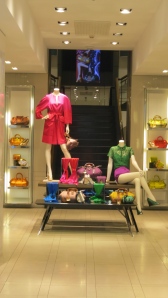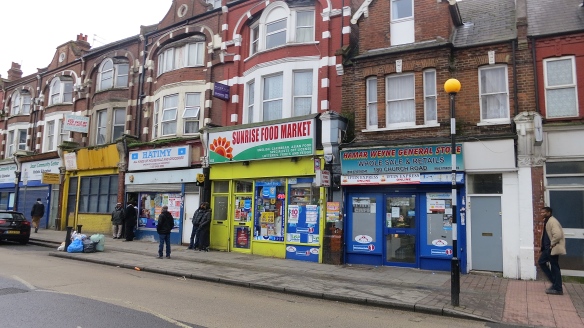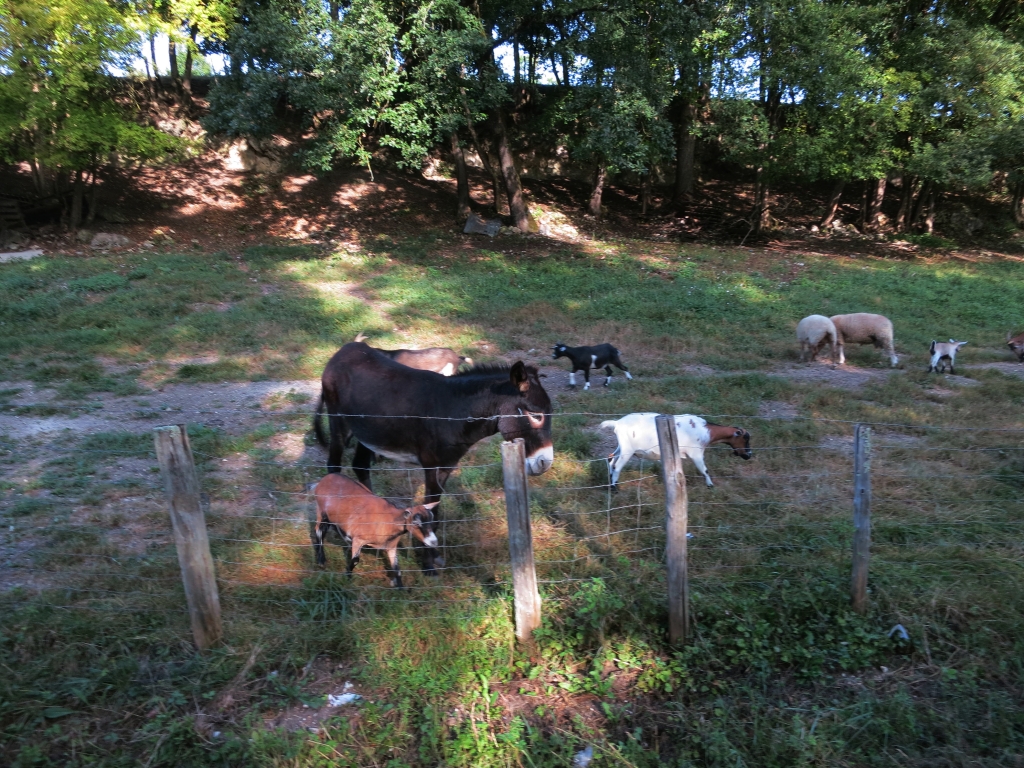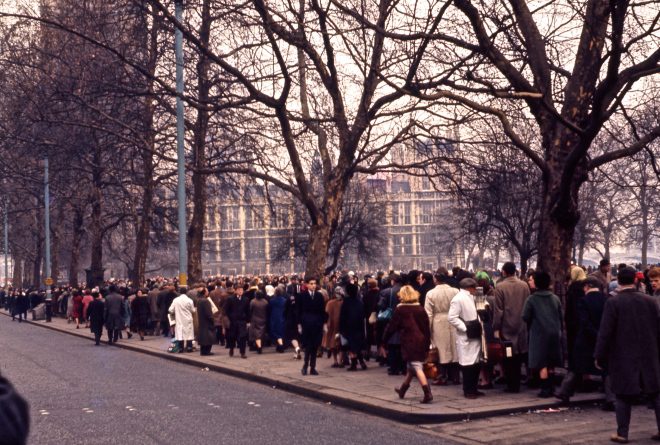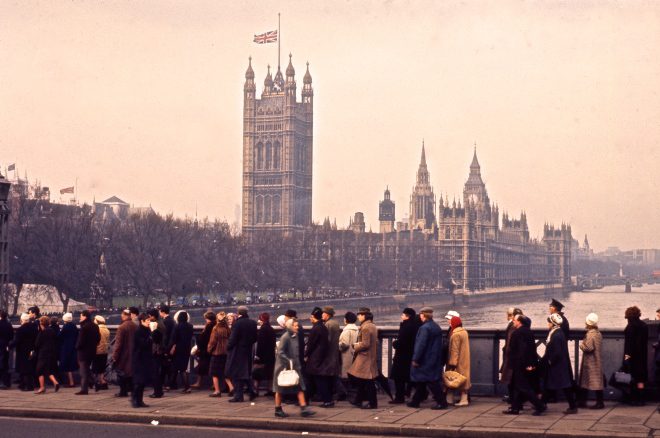


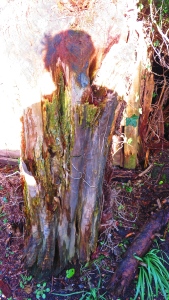 In bright sunlight this morning I played around with the super vivid setting on the camera. I reduced the saturation in the saw picture in order to reproduce the natural colours which still look pretty unreal. This tool was discovered when we were clearing the overgrown hedging on the back drive, and remains where we propped it.
In bright sunlight this morning I played around with the super vivid setting on the camera. I reduced the saturation in the saw picture in order to reproduce the natural colours which still look pretty unreal. This tool was discovered when we were clearing the overgrown hedging on the back drive, and remains where we propped it.
The timid tits approaching the bird feeder stop off in the shrubs behind it in order to watch for their moment to swoop and snatch up their sustenance before being attacked by more belligerent birds such as robins, or assassinated by humans who may have set out the larder as bait for nefarious purposes.
I forget the name of the influential art master who taught for a short time at Wimbledon College. Rather a tempestuous character, he was sacked for beating up Adam Pardon. He helped us to see that trees were not simply a single brown in hue. Nothing makes this clearer than the range of russets, oranges, ochres, greens, yellows and indigoes sported by the decaying wood of our dead stumps or discarded planks. These photographs have not exaggerated them much.
Becky and Ian had given me Boris Johnson’s timely publication ‘The Churchill Factor’ for Christmas. Rather appropriately, I finished reading it today. Boris has written neither a history, nor a biography, but an extended eulogy for the great man. This is a very readable book, benefiting from the writer’s admirable research and entertaining facility with the language. Sir Winston Churchill died 50 years ago today, and, the first commoner since the Duke of Wellington, to receive the honour, lay in state in the Great Hall at Westminster.
At the time, I was working for Mobil Shipping Company at the now demolished Pill Box building between Waterloo Station and Westminster Bridge. I watched a queue of 300,000 people snaking across the bridge and The Embankment on their way to pay their respects to the man who had so eloquently rallied their spirits during the war that had ended just twenty years earlier. Johnson reminds us that there was so much more to Winston than that, but I won’t add to the billions more words that are bound to be produced in the days to come.
During my lunch hour, I nipped out with my totally non-automatic Kodak Retinette 1b camera, and photographed those people braving the cold winter’s day. I first published a selection of these with my post of 22nd May 2012, but I think it fitting to repeat them today. Note that the Union Flag flies at half mast over the Houses of Parliament.
For our dinner this evening Jackie coated chicken thighs in their skins with piri-piri seasoning and roasted them in the oven. Retaining the skins produces enough fat to obviate the need for oil. This was accompanied by her usual savoury rice without egg. We had the chickens after all.
The surprise addition was the melange of sautéed red cabbage and other vegetables. Into the finely sliced cabbage, onions, and green beans, which were stir fried, carrots were added quite late on in order that they should retain their original colour. When everything was soft enough a splash of vinegar was added, a lid was applied the saucepan and the whole steamed on a low heat for no more than ten minutes. I recommend it. Between us we finished the Pedro Jimenez white wine.
This is my 1,000th post since I began my blog on 9th May 2012. Although some entries have been published a day or two late, no dates have been missed.
P.S. The following morning Jackie and I had a discussion about just what is contained in the queue photos. When I last published them Becky had commented on the fashions of the day. Jackie was struck by the number of hats displayed on the heads of both men and women, and the number of fur coats still acceptable then. The one woman walking in the opposite direction on Lambeth Bridge in the first picture would be on her way to the end of the line. It would take her three or four hours to reach the front
A policeman who commented on BBC news may possibly be visible in the third picture. He answered our conundrum about the line of vans seen on the far side of the first image. They were catering facilities provided by the WRVS. Clutched in the arms of a news vendor on the right of photo three are copies of The Times, the front pages occupied by a photograph of the great man.
Clicking on the images produces larger images which helped us examine the details. Maybe you could find more of the information from half a century ago.




